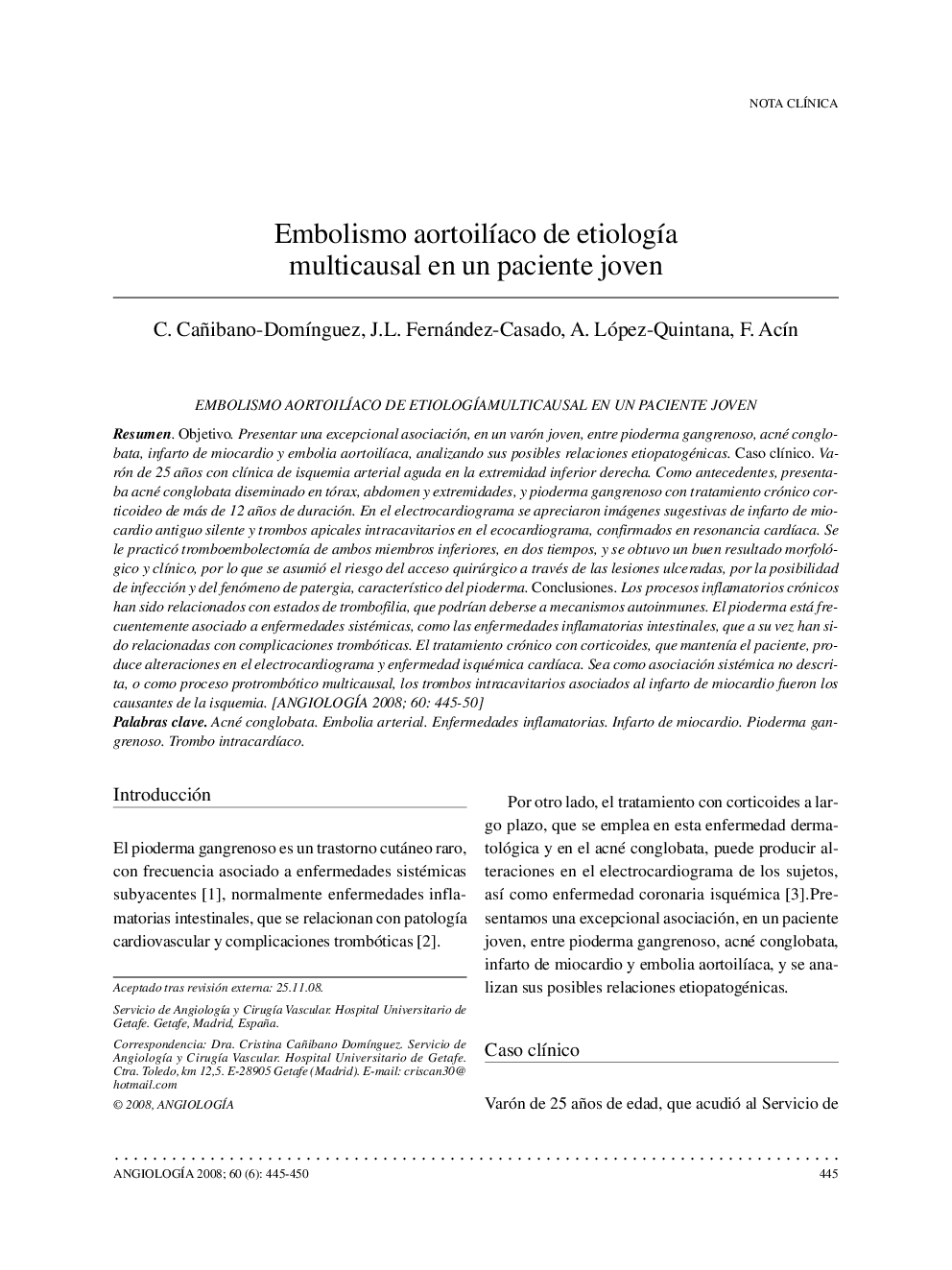| کد مقاله | کد نشریه | سال انتشار | مقاله انگلیسی | نسخه تمام متن |
|---|---|---|---|---|
| 2867928 | 1573586 | 2008 | 6 صفحه PDF | دانلود رایگان |
عنوان انگلیسی مقاله ISI
Embolismo aortoilÃaco de etiologÃa multicausal en un paciente joven
دانلود مقاله + سفارش ترجمه
دانلود مقاله ISI انگلیسی
رایگان برای ایرانیان
کلمات کلیدی
موضوعات مرتبط
علوم پزشکی و سلامت
پزشکی و دندانپزشکی
کاردیولوژی و پزشکی قلب و عروق
پیش نمایش صفحه اول مقاله

چکیده انگلیسی
Summary. Aims. To present an exceptional association, in a young male, of pyoderma gangrenosum, acne conglobata, myocardial infarct and aortoiliac embolism, and to analyse their possible aetiopathogenic relations. Case report. We studied the case of a 25-year-old male with a clinical picture of acute arterial ischaemia in the right lower limb. The patient had a history of disseminated acne conglobata on his thorax, abdomen and limbs, and had been receiving corticoid treatment for pyoderma gangrenosum for over 12 years. An electrocardiogram revealed images suggesting a previous silent myocardial infarct and the echocardiogram showed intracavitary apical thrombi, which were confirmed in the cardiac magnetic resonance scan. A thromboembolectomy was performed in both lower limbs, in two sessions, and a good morphological and clinical result was obtained; the decision was therefore made to risk taking a surgical approach via the ulcerated lesions, due to the possibility of infection and the phenomenon of pathergy, which is characteristic in pyoderma. Conclusions. Chronic inflammatory processes have been related to thrombophilic states, which could be due to autoimmune mechanisms. Pyoderma is often associated with systemic diseases, such as inflammatory bowel diseases, which have in turn been linked to thrombotic complications. Chronic treatment with corticoids, which is what maintained the patient, produces alterations in the electrocardiogram and ischaemic heart disease. Whether as a systemic association that has not yet been described or as a prothrombotic process with multiple causation, the intracavitary thrombi associated with the myocardial infarct were the cause of the ischaemia. [ANGIOLOGÍA 2008; 60: 445-50]
ناشر
Database: Elsevier - ScienceDirect (ساینس دایرکت)
Journal: AngiologÃa - Volume 60, Issue 6, 2008, Pages 445-450
Journal: AngiologÃa - Volume 60, Issue 6, 2008, Pages 445-450
نویسندگان
C. Cañibano-DomÃnguez, J.L. Fernández-Casado, A. López-Quintana, F. AcÃn,